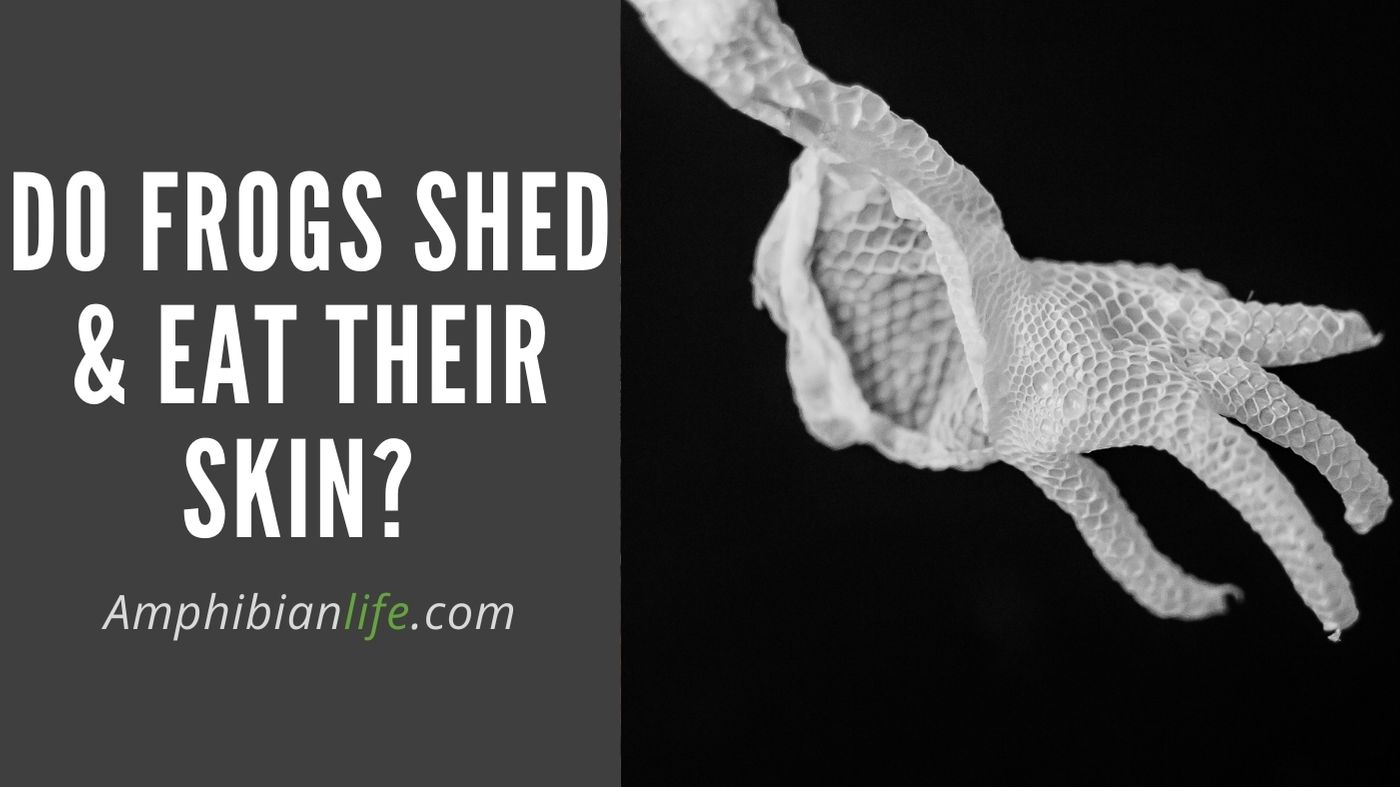
Frogs shed their skin in order to keep their skin from hardening. This is important, as frogs “breathe” through their skin when in water. If the skin didn’t shed, and instead hardened, it would become more difficult for oxygen to get through.
How frogs shed their skin?
Most frogs shed relatively easily and regularly. When a frog is ready to shed, it moves into a scrunched up, crouching position and creates a rip in the old skin. The frog then stretches so that the old skin comes off.
Do frogs eat their skin?
When the skin comes off, you will notice a strange phenomenon where the frog starts to eat his own skin!
Don’t be alarmed by this. While it may seem a bit disgusting to us, it is all part of a natural process. You see, frequent shedding causes frogs to lose a lot of nutrients.
To recover, the frog eats its own skin, which is a good source of calcium and other good things.
When your frog is done shedding, its patterns and colors will be at their most vibrant. This is a great time to take photographs and appreciate how beautiful your frog really is!

Signs of an oncoming shed
The only sign that your frog is about to shed is in their body position. Before shedding, a frog will get into a scrunched or crouched position. It will then stretch.
You may want to help your frog shed by taking some skin off of him. We strongly recommend NOT doing this. Instead, leave your frog alone.
Shedding is a natural process and you should give your frog time to shed in a peaceful, safe environment.
If your frog seems to be shedding very slowly, or there are other signs of problems, you may want to consult with a vet.

How often do frogs shed skin?
Like most reptiles and pets, amphibians sheds (sloughes) their skin on a regular basis
The Skin shedding or removal process can vary depending as per species from few days to several weeks.
frequent skin replacement prevents it from hardening and less permeable to oxygen.
Fungal disease and shedding
Shedding is a normal thing for frogs to do, but it can be easy to confuse this perfectly natural process with a skin disease.
Frogs are susceptible to many fungal infections.
Most of them you can recognize as fuzzy or cottony patches or sores on the frog’s skin. This looks very different to shedding.
When a frog sheds, the skin comes off as a whole.
When they are shedding in patches, then it is more likely a fungal infection. At this point, you should consult a vet.
They will be able to tell you what is happening with your frog and whether it is normal shedding or something to worry about.
What is Chytrid Fungus?
How does chytrid fungus kill amphibians?
This fungus attacks the parts of a frog’s skin that have keratin in them. Since frogs use their skin in breathing, this makes it difficult for the frog to breathe.
Chytrid fungus is a skin invading pathogen, that makes use of the permeability of amphibians skin.
It damages the central nervous system, causing abnormal behavior in frog’s and sometimes death.
